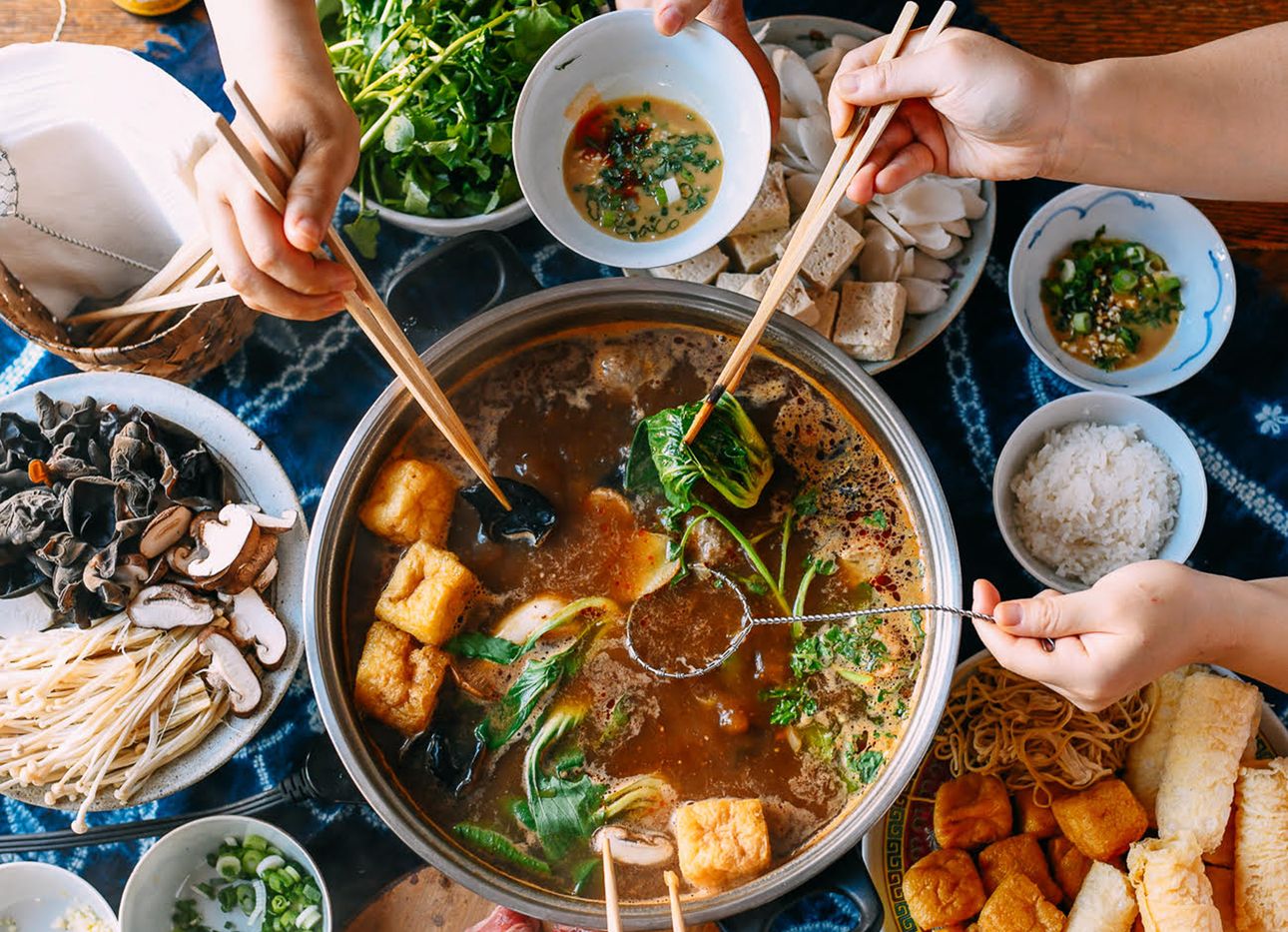
How to Hot Pot, According to Food Blogger Sarah Leung
Sarah Leung of The Woks of Life, the online recipe trove and cultural genealogy she’s run with her sister and parents since 2013, tells us how to make a hot pot meal at home—and why the communal East Asian dish makes for a most satisfying winter meal.
“Hot pot is incredibly varied. But a lot of your basic hot pot restaurants here in the U.S. will start by giving you a choice of broth—examples include a ‘plain’ or herbal broth, a mushroom-flavored one, a tomato-based one, and a spicy one. Then you order a range of ingredients that you cook directly in the broth, while it simmers on your table.
For the most part, the common thread that runs through all the different styles is the communal aspect, gathering everyone around one big boiling pot that sits in the middle of the table, cooking your own food in front of you and having it piping hot—so hot that every bite is almost going to burn your mouth. [Laughs] Putting in what you like, judging when ingredients are cooked, scraping the pot and seeing what’s in there is its own fun, interactive, and tactile cooking and eating experience.
That said, hot pot is totally doable with a smaller group, and there are ways to enjoy it by yourself, too. To get started, it’s easier if you have a proper hot pot set-up, with an electric hot plate and a fitted pot that goes on top. They’re relatively inexpensive, but it’s sort of a single-use cooking tool, so I understand if somebody doesn’t want to invest in that. I heard from a reader who made a hot pot in her Instant Pot by first making a broth, then putting it on the ‘sauté’ setting to get it constantly simmering. That’s not a bad option, especially for two, because the pot can be a bit deep to reach into.
The image of hot pot is that there’s a huge abundance of different ingredients—but you don’t have to go crazy, so long as there’s a nice variety. For a smaller group, I recommend having one or two items across different categories for a nice balance of textures and flavors. For example, you might choose one kind of leafy vegetable, one kind of mushroom (enoki and wood ears are my favorite), and one hard vegetable, such as lotus root, winter melon, or potato. Then add a couple of meat and seafood options, and maybe one or two starches, like noodles or rice cakes. With eight or so items, you’ve got enough to make a tasty and varied hot pot meal.
Lastly, there are the dipping sauces. Typically you pick a base, and then add other stuff to it. I personally like a sesame paste–based sauce; my mom’s more of a soy sauce–based person, and my sister really likes shacha sauce, or Chinese barbecue sauce, as her base. Chili oil is another popular one. Some people also like putting vinegar into their sauce—just a touch of it, to make it a bit tangy. One of the most important elements is the fresh ingredients you add to your sauce base—things like minced raw garlic, scallions, and fried shallots, to give it an extra layer. Everybody’s sauce preferences are different, which is great because they lend an individualized aspect to this very communal style of cooking.
As for the broth, it depends on what kind of hot pot and broth you’re having. If it’s a Sichuan base, which tends to consist mostly of very spicy chili oil, I would not plan to drink it—you’ll get more than enough flavor from just boiling and eating the ingredients. But if you’re starting with a high-quality broth, by the end, it will have gotten much more flavor after all the ingredients have passed through it—you can skim off the top and enjoy it as a soup. But it’s common to just discard it, too. That’s the beauty of hot pot: Aside from the general food-safety measure of making sure your raw ingredients have been cooked properly, there’s really no wrong way to do it.”